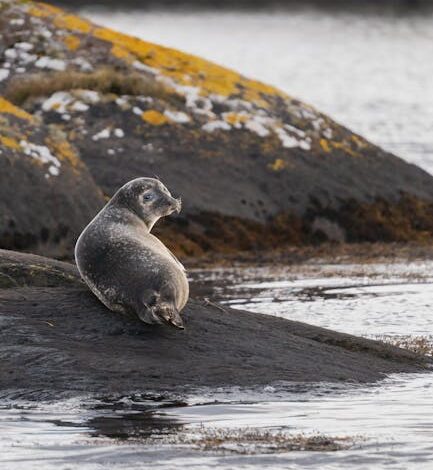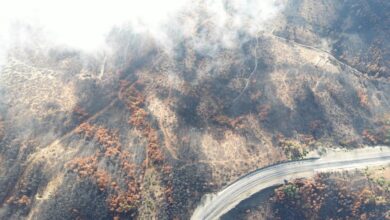The Ocean’s Warming Embrace: Fueling the Fury

The roar of a hurricane is an unforgettable sound. It’s a primal force, a churning vortex of wind and water that can reshape coastlines and lives in a matter of hours. For those who’ve experienced one, the dread as a storm approaches is palpable. We watch the forecasts, track the cones, and prepare for the worst, hoping the storm will veer away or weaken.
But what if these monstrous storms aren’t just natural occurrences? What if their very ferocity, their devastating potential, is being supercharged by something we’re doing? That’s the unnerving question at the heart of recent research concerning Hurricane Melissa, a storm that left an indelible mark on communities and, now, on our understanding of climate change.
A new study suggests that the human fingerprint on our climate made Hurricane Melissa — one of the worst hurricanes on record — four times more likely. Four times. It’s a statistic that doesn’t just grab attention; it demands reflection. This isn’t abstract climate modeling; this is about specific events, specific lives, and the undeniable link between our actions and the planet’s powerful, often terrifying, responses.
The Ocean’s Warming Embrace: Fueling the Fury
When we talk about hurricanes, we’re essentially talking about colossal heat engines. They thrive on warm ocean waters, which act as their primary fuel source. Think of it like pouring gasoline on a fire: the warmer the water, the more energy available for the storm to intensify, to grow larger, and to unleash more devastating rainfall.
Hurricane Melissa, like many powerful storms, found itself churning over unusually warm stretches of ocean. For years, scientists have warned that rising global temperatures would lead to warmer seas, and that, in turn, would provide more potent conditions for tropical cyclones. This isn’t speculation; it’s basic physics. Warmer water evaporates more readily, pumping more moisture into the atmosphere, which then condenses and releases latent heat, further powering the storm’s engine.
Beyond Temperature: A Confluence of Factors
While ocean temperature is a critical ingredient, it’s not the only one. Climate change doesn’t just warm the oceans; it subtly shifts atmospheric patterns, too. Picture it as a complex dance where various elements – wind shear, atmospheric stability, and ocean heat content – all play a role in a hurricane’s formation and intensity. High wind shear, for instance, can tear a nascent storm apart, but a warmer world might see changes in these shear patterns, allowing storms more room to grow unimpeded.
The overall increase in atmospheric moisture, a direct consequence of a warmer planet, also plays a significant role. More moisture means heavier rainfall, leading to increased flooding risks even from less intense storms. So, while Melissa was undeniably fierce in its winds, the accompanying torrential rains, fueled by an atmosphere primed with extra humidity, would have compounded its destructive power. It’s a compounding effect, where one climate change impact amplifies another, creating a more dangerous scenario for coastal communities.
Attribution Science: Connecting the Dots
For a long time, if you asked a scientist if a specific weather event, like Hurricane Melissa, was “caused” by climate change, the answer would typically be a nuanced “no, but it was made more likely.” This cautious approach was understandable; weather is complex, and many factors contribute to any single storm. However, the field of “attribution science” has dramatically evolved, allowing researchers to quantify that “more likely” with increasing precision.
This is where the groundbreaking finding about Hurricane Melissa comes in. Researchers use sophisticated climate models to compare two scenarios: one representing our current climate with human-caused greenhouse gas emissions, and another representing a hypothetical world without those emissions – a “pre-industrial” climate. By running simulations under both conditions, they can isolate the influence of human-induced climate change on specific extreme weather events.
What “4 Times More Likely” Really Means
When the study suggests that climate change made Hurricane Melissa four times more likely, it’s not saying the storm wouldn’t have happened at all without climate change. Instead, it’s like rolling a dice. In a pre-industrial world, the probability of conditions aligning for a storm of Melissa’s magnitude might have been, say, once every 100 years. In our current climate, those odds shorten dramatically to once every 25 years. That’s a profound shift.
This kind of attribution is incredibly powerful. It moves the conversation beyond abstract probabilities to tangible impacts. It allows us to point to specific events and say, with scientific confidence, that climate change played a significant, measurable role. This isn’t just academic; it has profound implications for how we plan for disaster, how we fund resilience, and how we talk about our collective responsibility.
Adapting to a New Reality and Taking Action
The implications of studies like this are sobering. If storms of Melissa’s intensity are becoming four times more probable, it means we face a future where extreme weather events are not just more frequent, but also more potent. This isn’t just about coastal erosion or property damage; it’s about lives, livelihoods, and the fabric of communities that bear the brunt of these increasingly powerful natural disasters.
For individuals and governments alike, this research underscores an urgent need for both adaptation and mitigation. Adaptation means building smarter infrastructure, developing better early warning systems, and creating more resilient communities that can withstand stronger winds and heavier rains. It means rethinking how we build, where we build, and how we prepare for the inevitable. The lessons learned from Melissa, and the scientific backing that links it to climate change, should be driving these efforts with renewed urgency.
But adaptation alone isn’t enough. The other, equally crucial part of the equation is mitigation – drastically reducing the greenhouse gas emissions that are fueling this planetary transformation. This involves a global shift towards renewable energy, improved energy efficiency, sustainable agriculture, and protecting our natural carbon sinks like forests and oceans. Each ton of carbon we prevent from entering the atmosphere is a small step towards tempering the fuel that future storms might draw upon.
The story of Hurricane Melissa and its amplified likelihood due to climate change is a stark reminder that the impacts of a warming world are not distant threats; they are here, now, shaping the weather events that directly affect us. It’s a call to action, not just for policymakers, but for all of us to understand our connection to the climate system and to contribute to solutions that will protect our planet and future generations from an increasingly turbulent future. Our choices today will determine the intensity of tomorrow’s storms.





